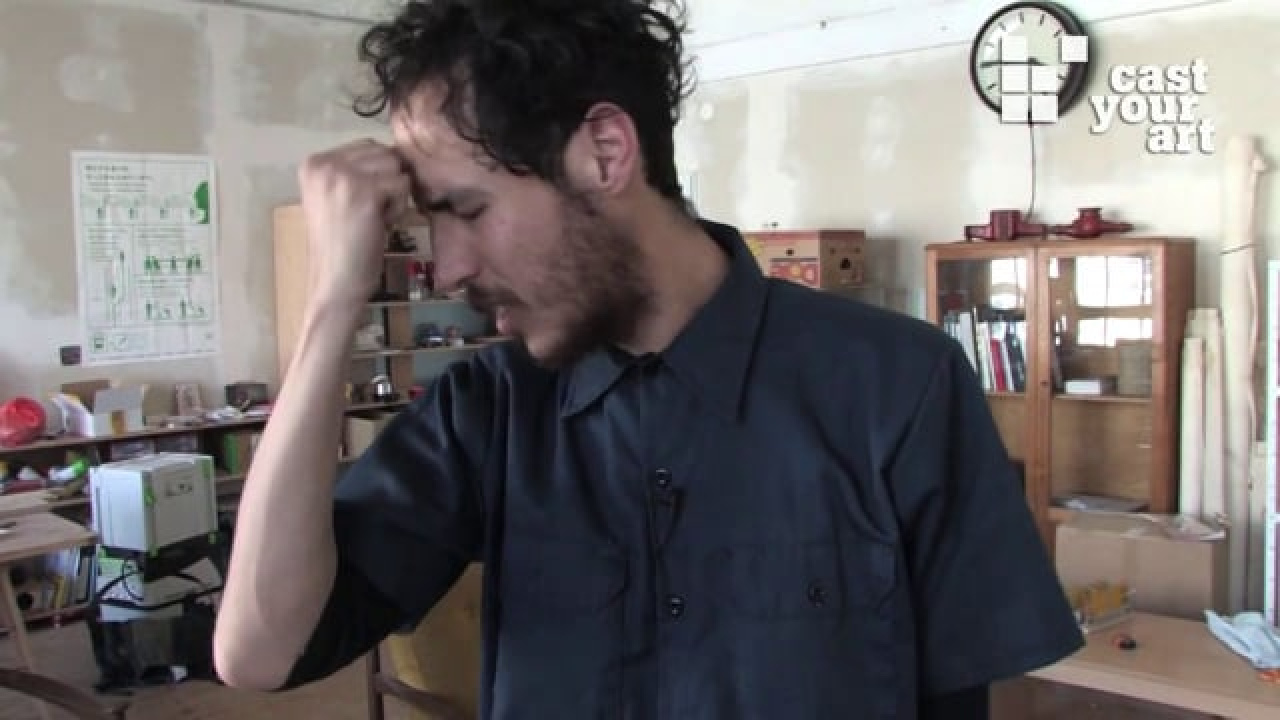NIKO PIROSMANI. The Georgian artist at Albertina Museum
For Albertina director Klaus Albrecht Schröder he is „the most important and influential painter in Georgia, he is considered the ‚Rousseau of the East‘, but he is still hardly known in the West.“
Today Niko Pirosmani’s (born 1862 as Nikolos Pirosmanashvili in a Georgian village) pictures are found printed on plates, aprons, socks and T-shirts in the shops of the capital Tbilisi, his very popular paintings are exhibited in the National Museum and his portrait is on a banknote.
In Georgia he is celebrated as artist of the nation today, but he spent most of his life as a homeless person who painted his pictures for board and lodging. He died homeless in a basement, nobody knows where he was buried.
The exhibition in the pillar hall of the Albertina was curated by Bice Curiger and Elisabeth Dutz, including 30 pictures on loan from the Georgian National Museum.
They paintings are flat and colorful, reminding of icons. In magical, naively narrated sceneries they show joyful feasts, donkey, foxes, bears but also exotic animals, which the artists probably painted after press photographs as he never left his country, and there was no zoo in Georgia at the time. Traditional Georgian wine jugs are recurrent subjects in the pictures.
It is estimated that only one tenth of his work is still preserved. Most pictures were painted on black wax cloth that was used as covering sheets for rain protection.
Curator Brice Curiger, former director of the Venice Biennale became aware of Pirosmani - who is practically unknown in the West- on the occasion of an exhibition in Zurich in 1995, in the Albertina his enormous influence on the Russian Avantgarde was realised during the preparations for an exhibition about Russian Modernism in 2016.
Georgian intellectuals became interested in Pirosmani as a folk painter and an ideal of anti-academism in Georgian taverns around 1912. Some of his pictures were seen in Moscow and influenced the work of painters like Chagall, Malevich, Larionov or Goncharova, similar to the influence of Henri Rousseau on the art scene in Paris.
He turned his back to the Georgian art scene however, he never joined the Georgian artists‘ society that was founded in 1916.
There is also contemporary art in the exhibition. In the pillar hall there is a table assembled with more than 600 perspex cubes with several blue roses incorporated. It is a reference to Pirosmani’s picture of French dancer Margarita. He was so madly in love with her that he spent all his savings for buying her flowers.
A second allusion that the creator, Japanese architect Tadao Ando, made in this specially designed seven meter – long table is a quote by Pirosmani : All that is necessary, he stated, is a house in the center of Tbilisi and a long table, where he could drink tea and talk about art with artist friends.
As Pirosmani’s grave is unknown, the table is also a kind of symbolic tomb, it will accompany the exhibition to following places like Japan and Suisse.
There is more contemporary art on display in the Albertina, like a new ink drawing by Georg Baselitz, « Pirosmani and Hokusai », as well as a book with an etching by Picasso, showing Pirosmani while painting.
Besides that there is a small format by US artist Karen Kilimnik, a self portrait by Kiki Smith, „Blue Stars above a Blue Tree“, furthermore two pictures by Yoshimotot Nara, which he took of pictures by Pirosmani, then a portrait of Pirosmani by Romanian artist Adran Ghenie and a sculpture by Georgian artist Andro Wekua – like other works, this sculpture is in possession of the Infinitart foundation which also financed the catalogue of the exhibition.
The importance of Pirosmani for his country’s culture is enormous, the exhibition aims not only to change the view on his work but also to awake interest in Georgia’s rich culture and to promote tourism. (written by Cem Angeli)
The exhibition continues until January 27. 2019
https://www.albertina.at/Das könnte Sie auch interessieren

Peter Fritzenwallner - Things on the Move
15. September 2010
FASCINATION JAPAN. Monet · Van Gogh · Klimt
18. October 2018
Ariel Schlesinger - Poetic Destruction
15. July 0000
PETER ZOLLY. artists only
12. November 2018
BORJANA VENTZISLAVOVA. We/re nature im tresor des Bank Austria Kunstforum Wien
25. March 2021
HERMANN NITSCH. Malerei im Albertina Museum
1. June 2019
Masterworks of Architectural Drawing from the Albertina Museum
7. February 2018
